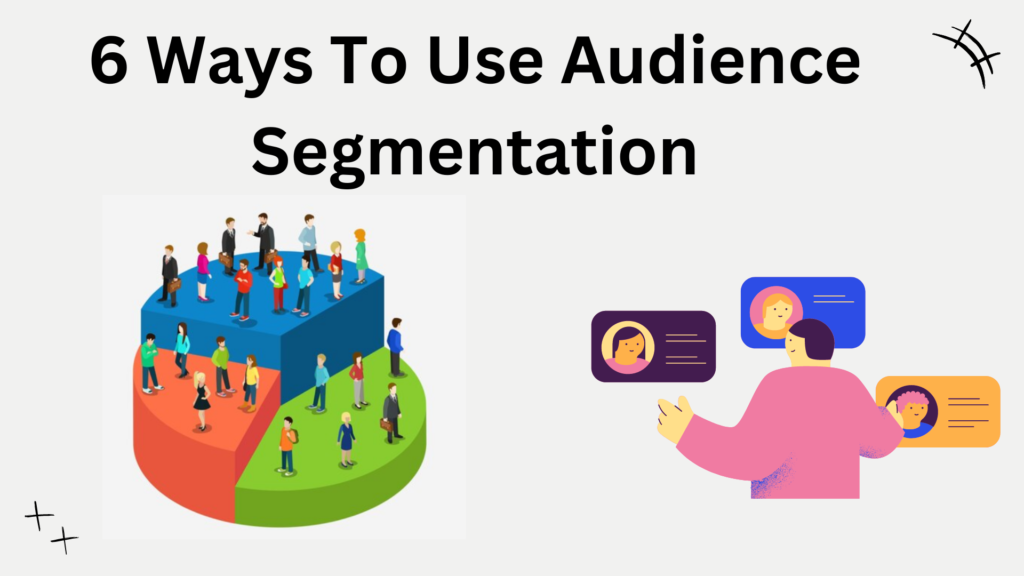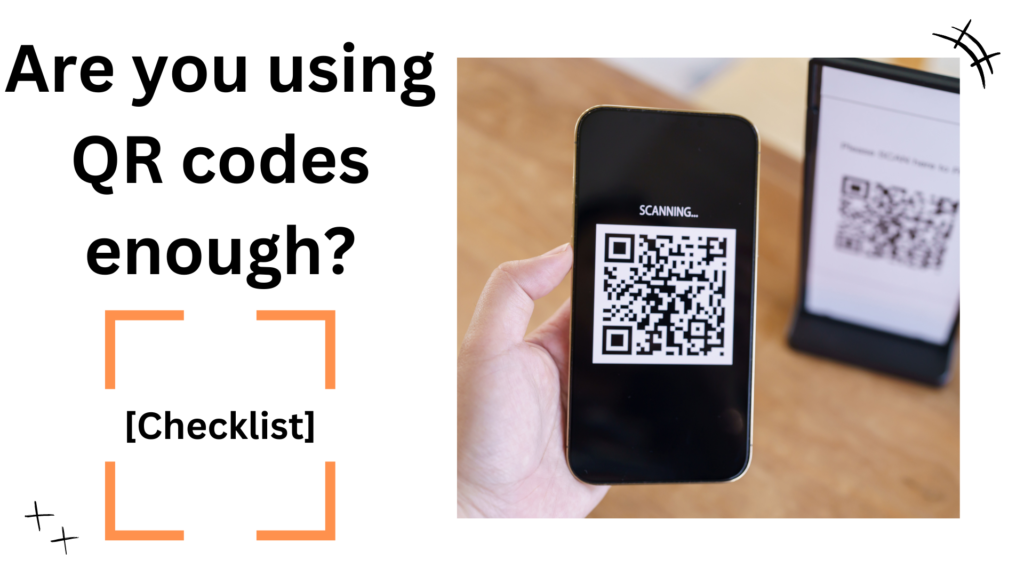When it comes to marketing, one size does not fit all.
To be successful, you need to segment your audience and use it to build your strategies. Otherwise, you run the risk of turning them off completely.
Audience segmentation is a critical component of any effective marketing strategy. It is often used to target specific groups of consumers who are more likely to purchase a product or service.
By identifying and targeting these groups, you can use your marketing resources more efficiently and effectively. And, you can lead to more sales and a better return on your investment.
This article will discuss how to use audience segmentation to boost revenue. We’ll also provide some tips for getting started.
So read on for all the details!
What is audience segmentation, and why is it important?
Audience segmentation is the process of dividing your target market into smaller, more manageable groups based on shared characteristics. Doing so can better tailor your marketing efforts to each group’s specific needs and interests.
There are many benefits to audience segmentation, including:
- Improved customer targeting: Segmenting your audience allows you to create more targeted campaigns more likely to resonate with each group. That means, you will better meet each group’s needs and interests, resulting in improved customer satisfaction.
- Increased sales: You’ll increase sales by targeting your marketing efforts more effectively as more customers are drawn to your product or service.
- Improved brand loyalty: When customers feel you understand their needs and are catering to them specifically, they’re more likely to remain loyal to your brand.
- Reduced marketing costs: By targeting your marketing efforts, you can avoid wasting money on marketing activities that don’t reach your target audience.
There are several ways to segment your audience, but some standard methods include demographics (age, gender, income, etc.), interests/behavior, and geographic location.
When you provide your audience with content and messages that are relevant to their specific needs, they will be more likely to appreciate and engage with your brand.
How to Use Audience Segmentation to Boost Revenue?
Let’s look at how audience segmentation can help you generate more revenue.
1. Upselling and Cross-selling
Audience segmentation allows you to create targeted upsell and cross-sell offers that are more likely to be successful. You can use each group’s needs and interests to create irresistible offers.
Upselling is when you convince customers to buy a more expensive version of what they were initially interested in. Cross-selling is when you sell a complementary product to a customer who is already interested in your offer.

But to be effective, you need to target the right audience with the right offer.
So, how can you effectively leverage audience segmentation for upselling and cross-selling? Here are the key steps:
- Define your segmentation criteria: Identify key characteristics or behaviors that differentiate your customers, such as demographics, psychographics, purchase history, or engagement level.
- Segment your audience: Use the criteria identified in step one to divide your customer base into different segments. For instance, you could have segments like “frequent shoppers,” “budget-conscious buyers,” “premium customers,” etc.
- Create personalized offers: Develop tailored upselling and cross-selling offers for each segment, based on their specific needs and preferences. You could recommend complementary products or services, offer upgrades or premium versions, or bundle related items together.
- Use targeted communication channels: Determine the most effective channels for reaching each segment based on their communication preferences and behavior. This could include email marketing, social media, personalized ads, or direct mail.
- Implement A/B testing: Test different offers, messaging, and communication channels within each segment to identify what resonates best with each group. Use A/B testing to refine your strategies and optimize conversion rates.
- Iterate and optimize: Continuously review and refine your audience segmentation, offers, and messaging based on customer feedback and performance data. Adapt your strategies as customer preferences and market conditions evolve.
By doing this, you can create more personalized and focused upselling and cross-selling efforts that connect with your audience, boosting conversion rates and revenue.
2. Dynamic Ads
Dynamic Ads allow businesses to show highly relevant ads to users based on their past interactions with the business.
This type of targeted advertising is designed to improve users’ chances of clicking on an ad and converting, as it is more likely to be relevant to them.
One way to make your Dynamic Ads even more effective is to use audience segmentation. Audience segmentation allows you to further personalize your ads based on the characteristics or behaviors of various user groups.
By segmenting your audience, you can show different ads to different groups of people based on their interests, demographics, or behavior.
So, after defining your Audience Segments, develop a set of ad templates that can be dynamically customized based on the characteristics of each audience segment. This could include variations in images, copies, offers, or calls to action. Here is an example.

Then, choose an ad platform that supports dynamic ad serving, such as Google Ads, Facebook Ads, or programmatic advertising platforms. These platforms allow you to create rules and templates for dynamic ad content.
Next, integrate data sources such as customer relationship management (CRM) systems, website analytics, or third-party data providers to gather information about your audience segments. This data can include demographics, browsing history, purchase behavior, and more.
Finally, set up rules and triggers that determine when and how dynamic ads are served to different audience segments. For example, you might show different ads to users based on their location, device, time of day, or past interactions with your brand.
3. Leverage the Power of Chatbots
Chatbots are one of the most popular tools used by businesses to communicate with their customers. By leveraging the power of chatbots, you can provide a more personalized and efficient customer service experience. You can also use them to automate tasks and processes, making them an essential part of any modern business operation.
However, to connect with your audience on a deeper level using chatbots, audience segmentation is critical.
When you understand who your target audience is and what they want, you can create a chatbot that provides them with the information they need in an engaging and relevant way. The chatbot below is an example. It provides relevant recommendations and links to make conversation easier.

Also, it will help you keep your chatbot organized and make it easier for customers to find what they are looking for.
Building categories for your chatbot is relatively simple. All you have to do is:
- Decide on a structure for your chatbot. You can have the main menu with sub-categories or a list of products or services your chatbot offers.
- Create a category for each item you offer. For example, if you are building a chatbot for an online store, you might have categories such as “Clothing”, “Shoes”, “ Accessories”, etc.
- Add products or services. This can be done manually or by using a chatbot builder that offers a category management system.
When structuring a chatbot, one of the most important things to consider is how you will organize your information. This is especially true if you are building a chatbot for e-commerce, as you will need to clearly understand what products or services your chatbot will be offering. One way to do this is to build categories for your chatbot.
4. Email personalization
Email personalization is the practice of tailoring the content and design of an email to the specific needs and interests of the recipient.
You can boost engagement, conversion rates, and customer loyalty by customizing emails for individual customers. Of course, you need to segment your email list into different groups to get the best results.
You can segment your list based on age, gender, location, interests, or even past purchase history. By doing this, you can ensure that each group receives relevant information tailored to their needs and interests.
For instance, the user who created Zapier’s first Workflow received this email. The brand provided helpful tools and links, promoting further activities.

If you’re not sure where to start with email personalization, try using some of the following tips:
- Use customer data from previous interactions to segment customers tailor content to match their interests and send targeted emails.
- Use dynamic content to insert personalized information into your templates, such as the recipient’s name or location, into the email template.
- Find the right balance between too much and too little customization. Too much personalization can come across as intrusive or overwhelming, while too little can make the email seem generic and uninteresting.
- Test different approaches to see what works best for your business and your customers
The key is to find the sweet spot that will make your customers feel unique and valued.
5. Create Targeted Surveys on Your Site
Creating targeted surveys on your website can be an excellent way to collect data from a specific audience that you want to target. This is especially useful if you want to know more about a customer segment that you’re targeting, or if you want to get feedback on a new product or service that you’re launching.

There are a few things to keep in mind when creating targeted surveys:
- Ensure that the questions you’re asking are relevant to your audience segment. If you’re surveying people interested in buying a new car, for example, you wouldn’t want to ask them about their favorite type of ice cream.
- Ensure that the questions you’re asking are clear and concise. You don’t want to confuse your respondents with long, complicated questions.
- ensure that you offer an incentive for taking the survey. People are more likely to take the time to fill out a survey if they know they’ll get something in return, like a discount on a purchase or a chance to win a prize.
The best way to create targeted surveys on your site is to use a tool like SurveyMonkey. With SurveyMonkey, you can create surveys targeting specific audiences and customize the questions and responses to get the most accurate information possible. You can also use SurveyMonkey to create polls and quizzes, which can be a great way to engage your audience and get feedback on your products or services.
6. Send Relevant Content That solves problems
Creating relevant content is essential to any successful marketing strategy. And relevant content is anything helpful or interesting to your target audience.
It should be something your audience can use to improve their lives in some way, whether it’s a tips and tricks article on fixing a broken iPhone or a helpful guide on choosing the right life insurance policy.
However, the key to sending relevant content is to segment your audience and send them content tailored to their specific needs. That way, you’re not bombarding them with information they don’t care about, and you’re more likely to pique their interest.
Neil Patel, for example, provides a variety of content marketing-related resources. It has the followingf guide for beginners.

Also, Neil includes articles for intermediaries and experts.

That is how content segmentation works.
So, when creating content, keep your audience segments in mind. What is each segment interested in? What are their needs and wants?
Here are some tips for creating relevant content:
- Take some time to research your audience and learn as much as you can about their needs and wants.
- Create content that is specific to each audience segment.
- Keep it interesting. No one wants to read boring content. Write about topics that are fascinating and relevant to your audience segments.
- Be consistent. Post regularly and keep your audience segments engaged.
- Repurpose your content.
It is also critical to keep your audience segments in mind when promoting your content. When you are promoting your content, make sure that you are targeting the right audience segments. This could mean using different social media platforms or even paying to advertise.
Conclusion
Segmentation is necessary to understand who your customers are and what they want. You can use segmentation to improve customer relationships, increase brand loyalty, and boost revenue.
Different strategies, such as upselling and cross-selling, dynamic ads, leveraging chatbots, email personalization, creating targeted surveys, and sending relevant content, can be used to leverage audience segmentation for revenue growth.
Remember that customer preferences and behaviors can change over time, so staying proactive and adaptable is key to successful segmentation for revenue growth. So, make sure you always evaluate and adapt your segmentation strategies.



